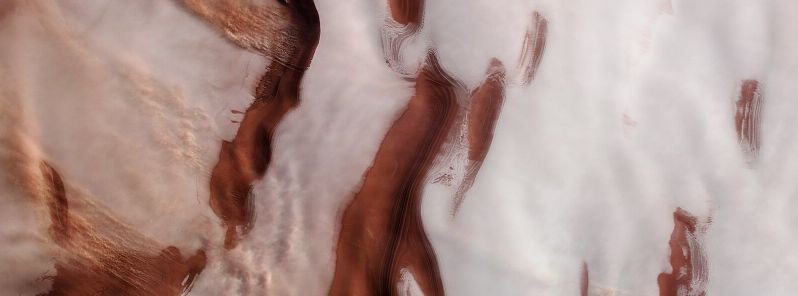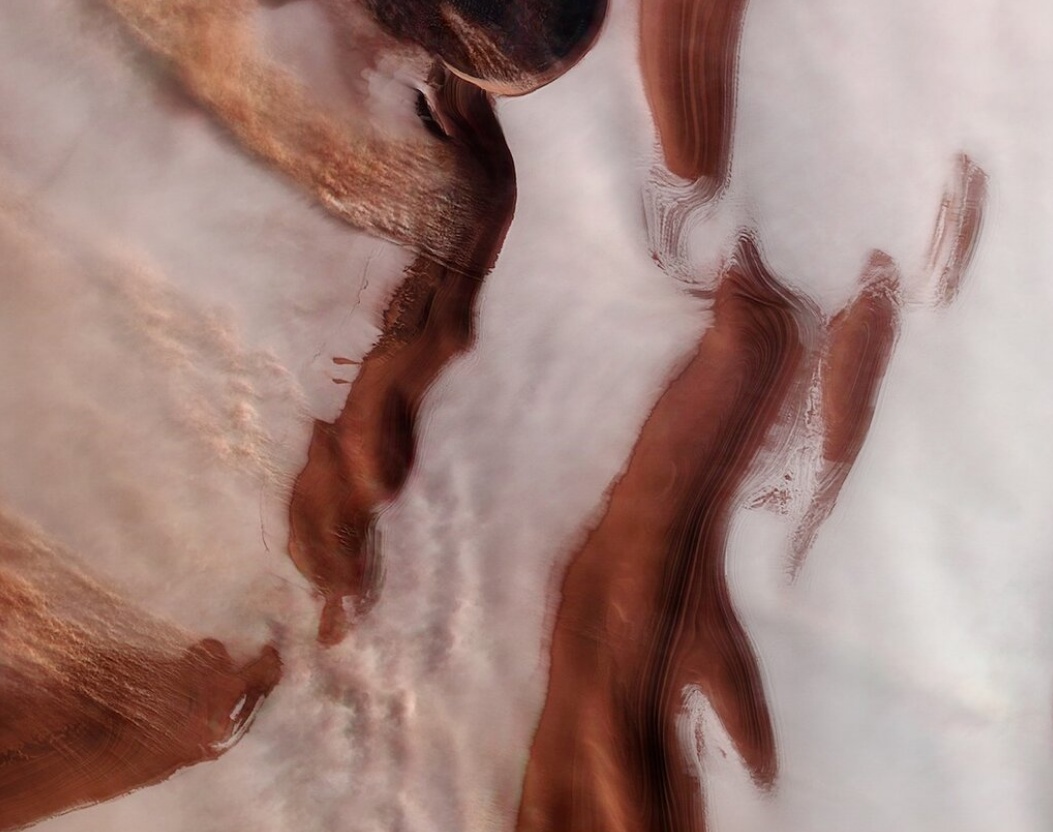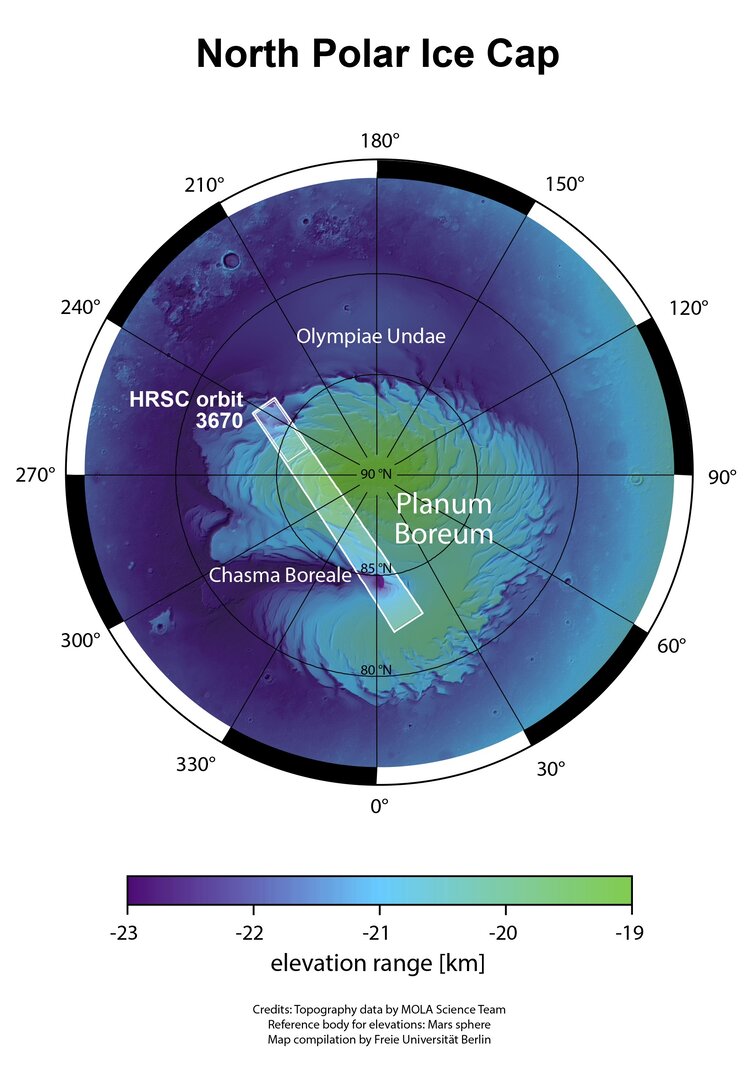Stormy activity and rippling ice at Mars’ north pole

The European Space Agency (ESA) shared a stunning image captured by Mars Express' High-Resolution Stereo Camera on the red planet, showing a stormy activity on the icy cap at the north pole, with swathes of ice, dark troughs, depressions, and signs of strong winds.
The landscape is a rippled combination of colors, with dark red and ochre-hued troughs appear to cut through the icy white of the polar cap. "These form part of a wider system of depressions that spiral outwards from the very center of the pole," said ESA.
When observed on a bigger scale, the pattern becomes evident: rippling troughs curve, bend, and slice outwards, counterclockwise, wrapping around the pole and producing a pattern that looks like zebra stripes.
According to ESA, these were believed to be caused by small local storms that shoot dust into the atmosphere of Mars, eroding scarps and gradually changing the appearance of the troughs.
"It is thought that winds circle radially away from the center of the north pole, moving outwards cyclically to create the spiral pattern we see."
The winds, known as katabatic winds, move cold and dry air downslope under the force of gravity, usually originating in higher, colder elevations and flowing down into lower, warmer areas.

Image credit: ESA/DLR/FU Berlin, CC BY-SA 3.0 IGO
To the left of the frame, few extended streams of clouds can be seen, aligned perpendicularly to a few of the troughs.
ESA noted that the active processes occurring in the poles are interesting areas of Mars. The layers of ice carry information about the red planet's history, especially about how its climate evolved in the last millions of years.
One of HRSC's main goal is to explore the different phenomena taking place in the Martian atmosphere, such as storms, and the other intriguing geological processes that occur across and below its surface.

Furthermore, the aim of characterizing the entirety of Mars and its history will be continued by the ESA-Roscosmos ExoMars Trace Gas Orbiter, which landed on Mars in 2016, and the ExoMars Rosalind Franklin rover, which will arrive in 2021.
"This image is published to coincide with the Seventh International Conference on Mars Polar Science and Exploration, which is taking place in Argentina from January 13 to 17, 2020," ESA stated.
"This is the latest in a series of international and interdisciplinary conferences to share knowledge about the intriguing polar regions of the Red Planet."
Featured image credit: ESA/DLR/FU Berlin

Commenting rules and guidelines
We value the thoughts and opinions of our readers and welcome healthy discussions on our website. In order to maintain a respectful and positive community, we ask that all commenters follow these rules.